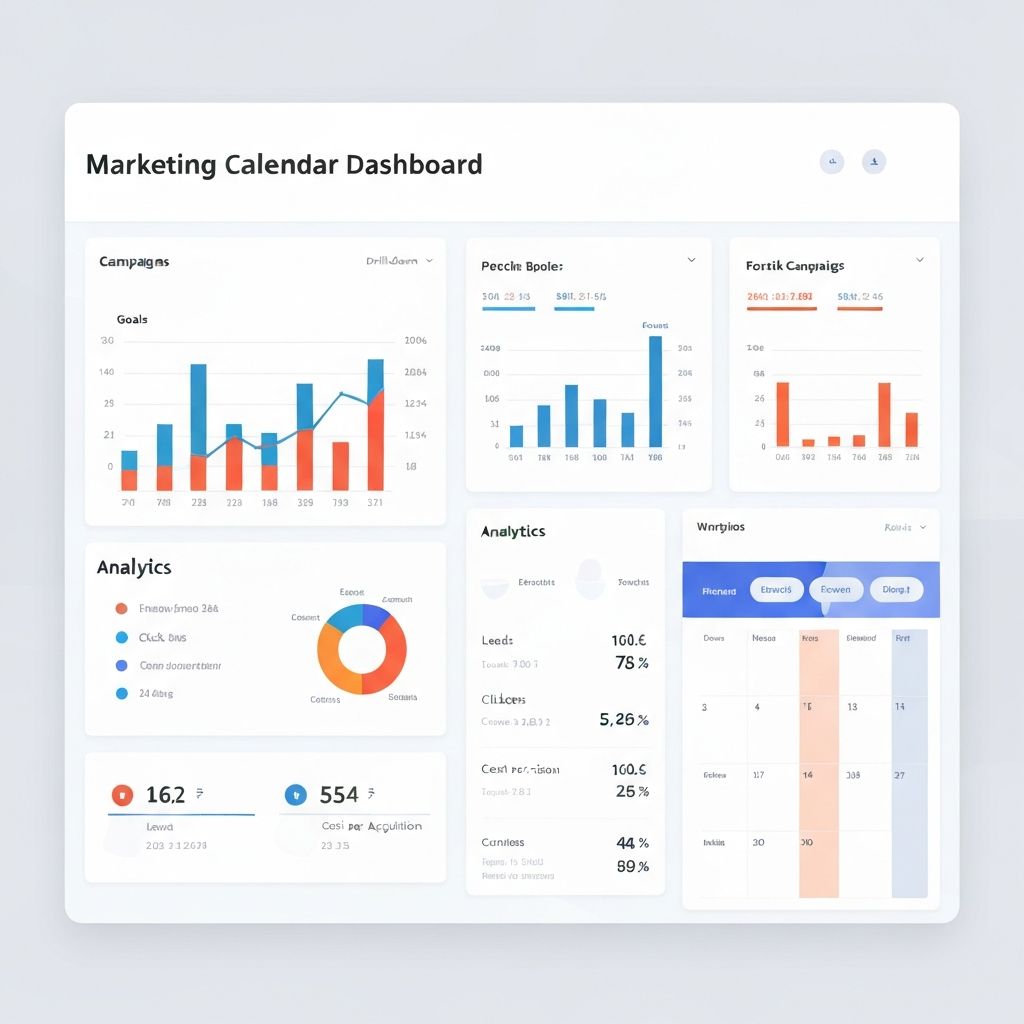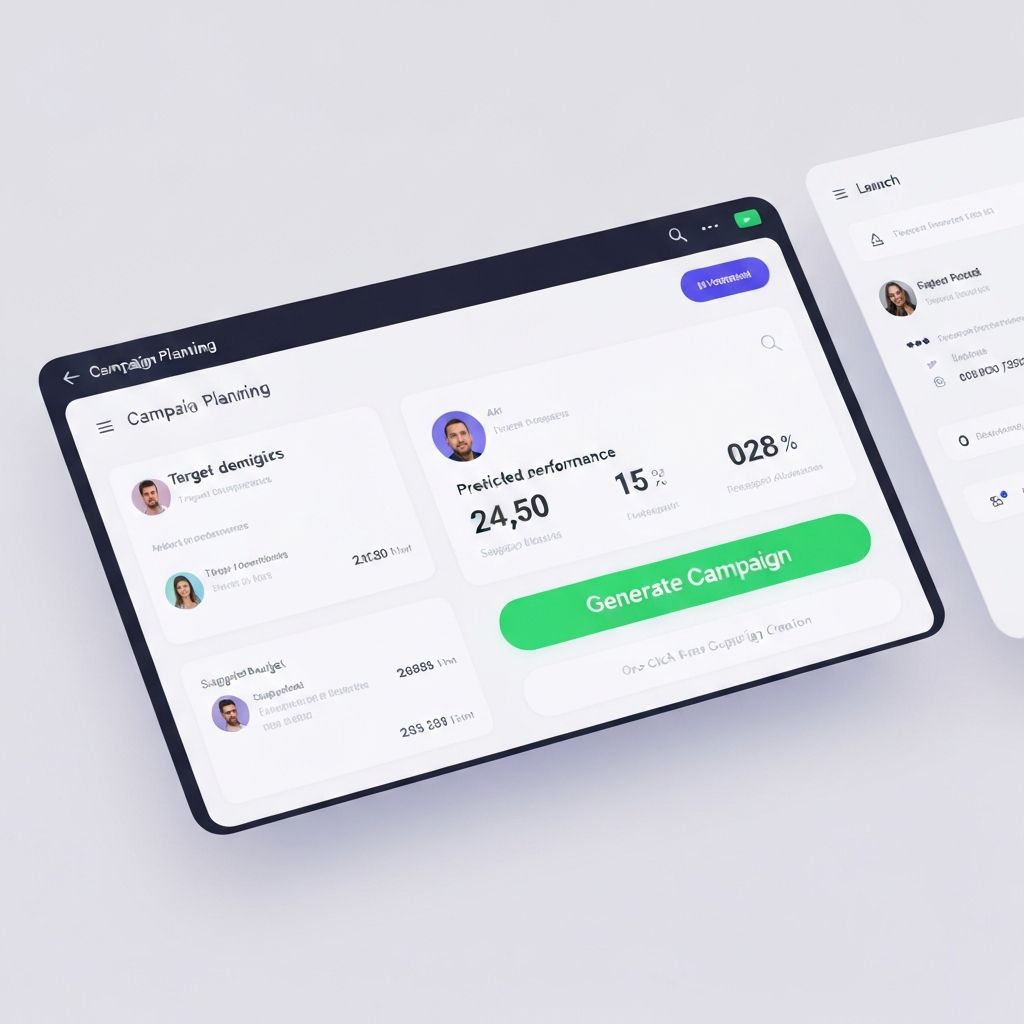It’s Tuesday afternoon and you realize Black Friday is three weeks away. You haven’t planned a single email. Your product pages aren’t ready. Meanwhile, your competitor already sent their first teaser campaign yesterday.
This happens to more Shopify merchants than you’d think. We run campaigns when we remember to, scramble when competitors launch something, and wonder why revenue feels so unpredictable.
A marketing calendar fixes this. Not the type where you write “do something for Valentine’s Day” and hope for the best. The type that tells you exactly what to promote, when to promote it, and why it’ll work based on your actual sales data.
Here’s how to build one that actually makes you money.
Why You Actually Need a Marketing Calendar
Last month I talked to a merchant doing $50K/month who couldn’t tell me what campaigns she ran in Q3. She just… promoted stuff when it felt right. Her revenue chart looked like a heartbeat monitor.
Compare that to stores with calendars. They know exactly which campaigns drove revenue, when to repeat what worked, and where the gaps are. Their revenue has a pattern you can predict.
What Happens Without a Calendar
You miss obvious opportunities because you’re too busy handling today’s crisis. By the time you think about Mother’s Day, everyone else already has their campaign live. You end up running generic “20% off everything” sales because you didn’t have time to plan something better.
Your campaigns compete with each other. You email about a flash sale while running social ads for a different promotion. Customers get confused, you waste budget, nothing performs as well as it should.
Every campaign starts from zero. No templates, no data on what worked last time, just you and a blank screen trying to remember what you did for last year’s Black Friday.
What a Good Marketing Calendar Has
A good marketing calendar needs three things:
-
It’s based on your data, not random holidays you found on Google. If your store doesn’t sell gifts, you don’t need a Valentine’s Day campaign just because everyone else runs one.
-
You can actually see what’s coming. Open it up and know what you’re promoting next week, what’s in draft for next month, and which big campaigns you need to prepare for.
-
It has the details you need to execute. Not just “Black Friday sale” but which products, what discount, which channels, what the email subject lines are. Otherwise you’re just moving the blank screen problem to later.
Step 1: Start With What Actually Sold
Open your Shopify Analytics. Go to the past 3-6 months and pull up your sales data. You’re looking for patterns, not just revenue numbers.
Identify Your Top Products
Which products made you the most money? Write down your top 10. Not just which ones sold the most units, but which ones brought in revenue. Sometimes your $200 item sells less often than your $30 item but makes you way more money.
Find Sales Patterns
When did you see sales spikes? Look at your order timeline. Any sharp increases probably came from:
- A successful campaign
- A competitor running out of stock
- A seasonal trend
Figure out which one it was.
Document What Worked
What campaigns actually worked? If you’ve been running promotions, track down which ones drove sales:
- Check your email metrics
- Look at which discount codes got used
- See which social posts got engagement
Most merchants remember their worst campaigns but forget to note their best ones.
Real Example: A merchant I work with sells home decor. She ran a “Spring Refresh” campaign in March with 25% off pastel colors. Did $18K in one week. She didn’t write it down. Forgot about it. Never ran it again. Left $18K on the table every March since then.
Don’t do that. Make a simple spreadsheet right now:
- Column 1: Product or collection
- Column 2: When it sells best
- Column 3: What promotion worked
If your wireless earbuds spike in September and a “Buy One Get One 20% Off” worked, write that down. You’re going to repeat it.
Step 2: Build Your Campaign Framework
Stores that do this right run three types of campaigns at once. Think of them as layers.
Big Campaigns (4-6 times per year)
These are your Black Friday, Holiday Season, Summer Sale type events. The ones where you go all-in: multiple emails, social ads, everything. You plan these 90 days out minimum.
Monthly Campaigns
Keep customers engaged between the big ones:
- New arrivals on the first Tuesday of every month
- Category sales mid-month
- Flash sales at the end to hit your revenue target
You plan these 30-60 days out.
Weekly Micro-Campaigns
These are your agile moves:
- A product starts trending on TikTok? Spotlight it this Friday
- Sitting on 200 units of something that’s not moving? Bundle deal this weekend
You plan these 7-14 days out based on what’s happening in your store right now.
Most merchants only do big campaigns, then wonder why customers forget about them for 11 months. Or they only do weekly sales and burn everyone out with constant discounts. You need all three.
Step 3: Pick Your Actual Holidays
You don’t need every holiday. You need the ones that make sense for your store.
Examples by Industry
If you sell tech accessories:
- Black Friday / Cyber Monday
- Back-to-school (September)
- CES in January (for new product launches)
- Maybe Prime Day if you’re on Amazon too
If you sell jewelry:
- Valentine’s Day
- Mother’s Day
- Holiday season (November-December)
Those three will do 60% of your year.
If you sell B2B SaaS:
- End of quarter (March, June, September, December) when companies are hitting budget deadlines
- Black Friday doesn’t matter to you
Write down your holidays first. Then add them to your calendar. But don’t just add the date - add the prep time. Black Friday isn’t November 29. Black Friday prep starts October 1 when you need to lock in your products, pricing, and email schedule.
Step 4: Actually Build The Thing
Get a spreadsheet. I don’t care if you want something fancier later, start with a spreadsheet.
Required Columns
- Date (both start and end if it runs multiple days)
- Campaign name (be specific: “Fall Collection Launch” not “promotion”)
- Product or collection you’re promoting
- Offer (25% off, BOGO, free shipping over $X)
- Channels (email, social, SMS, paid ads)
- Goal (revenue target and number of orders)
- Status (draft, ready, live, done)
- Results (actual revenue and conversion rate after it runs)
Fill in your big campaigns first. Add all the holidays you picked. Then add your monthly campaigns - what’s running first week, mid-month, end of month.
Leave gaps. This is where your weekly micro-campaigns go. You’ll fill those in based on what’s happening in your store that week.
Example Campaign Entry
Here’s what a good calendar entry looks like:
Campaign: Spring Jewelry Sale
Dates: March 15-22
Products: All spring collection + floral pieces
Offer: 25% off with code SPRING25, free shipping over $75,
bundle 3 items save 35%
Channels: Email (3-part sequence: announce on 15th, reminder on 19th,
last chance on 22nd), Instagram/Facebook daily posts,
SMS on launch day and final day
Goal: $15K revenue, 200 orders, 3.5% conversion rate
Status: DraftSee the difference? Anyone on your team can execute that campaign without asking you 50 questions.
Step 5: Stop Doing It Manually
Automate Discount Codes
If you’re still creating discount codes one by one in Shopify, stop. Use bulk discount creation or set up automatic codes that generate when you approve a campaign.
Build Email Templates
Your “new arrival” email format should be the same every month. Just swap the products and images. Takes 10 minutes instead of an hour.
Schedule Social Posts
Most platforms let you schedule 2-4 weeks out. Block one hour every Friday to schedule next month’s posts.
Use Tools That Actually Help
We built Market Mana because merchants kept telling us they spent 10+ hours planning calendars every month. Now it takes 60 seconds - we analyze your Shopify data and generate a complete 30-day calendar with products to promote, suggested discounts, and campaign copy.
But even if you don’t use us, find something that automates the repetitive parts.
Step 6: Track What Actually Happens
Weekly Reviews (15 minutes every Monday)
- Did last week’s campaigns hit their goals?
- What needs to change in next week’s plan?
- Are any products trending that you should spotlight?
- Any gaps coming up in the next 14 days?
Monthly Reviews (1 hour at month’s end)
- Which campaigns made money, which didn’t?
- What was your ROI on each campaign type?
- Update your product list if something new started selling
- Plan next month’s weekly campaigns now that you have data
Quarterly Reviews (2-3 hours)
- Is your overall cadence right? Too many sales, too few?
- Plan your next big campaigns
- Refine your best-selling products list
- Look at whether your promotional calendar matches when customers actually want to buy
Metrics That Matter
- Revenue per campaign (did it hit the goal?)
- Email open and click rates (are people still paying attention?)
- Conversion rate (did visitors actually buy?)
- Average order value (are your bundles working?)
- Time you spend planning (getting faster or still taking forever?)
Common Ways This Goes Wrong
Planning Too Far Ahead
Don’t plan six months in detail. Your March data will change what April should look like. Plan 30 days firm, 60 days flexible, 90 days rough.
Over-Promoting
Don’t fill every day with promotions. You’ll train customers to never buy at full price. Run sales then go quiet. Create rhythm.
Ignoring Your Data
Don’t ignore your data. If Tuesday emails convert better than weekend emails, stop sending weekend emails. I don’t care what the blog posts say, use your numbers.
Planning in a Vacuum
Don’t plan alone if you have a team. Your customer service person knows which products get the most questions. Your inventory manager knows what needs to move. Ask them.
Equal Effort for Everything
Don’t treat every campaign the same. Black Friday gets 10x the effort of a Tuesday product spotlight. Spend your time where it matters.
Template You Can Actually Use
Here’s a framework that works for most Shopify stores. Adjust based on your data:
Every Week
- Monday: Product spotlight email to your engaged subscribers
- Thursday: Social media promotion (organic, no ads needed)
- Every other weekend: Flash sale or limited offer
Every Month
- Week 1: New arrivals and product launches
- Week 2: Category or collection sale (rotate which category)
- Week 3: Bundle deals to increase order value
- Week 4: Flash sales and inventory clearance
Every Quarter
- Q1: New Year launch, Valentine’s Day
- Q2: Spring refresh, Mother’s Day, Father’s Day
- Q3: Summer sale, back-to-school (if relevant)
- Q4: Black Friday, holiday season
That’s your starting point. Modify based on what actually sells in your store.
Tools Worth Using
Free Options
Google Sheets works fine. Duplicate tabs for each month, share with your team, update as you go.
Budget-Friendly ($10-50/month)
Trello or Notion for visual planning. Good if you have a team that needs to collaborate on campaign tasks.
Worth the Investment
- Email platforms like Klaviyo or Omnisend for automation
- Market Mana if you want your calendar built automatically from your sales data. Saves the 10+ hours you’d spend planning manually
Not Worth It
Expensive enterprise tools if you’re under $1M/year. You don’t need complexity, you need execution.
What Success Looks Like
A merchant using this system knows exactly what’s running today, what’s launching tomorrow, and what’s coming next month. When they open their calendar, they see campaigns with real details: products, pricing, channels, copy.
They spend 15 minutes every Monday updating the calendar instead of 10 hours every month building it from scratch.
When something unexpected happens - a product goes viral, a competitor shuts down, a holiday gets moved - they have space in the calendar to adjust. They’re not locked into rigid plans, they have a flexible framework.
Their revenue becomes predictable. Not flat, not perfect, but predictable. They can tell you what Q3 will probably look like based on their calendar and past data.
That’s what you’re building here. Not a perfect system, a working one.
Frequently Asked Questions
How far ahead should I really plan?
30 days locked and ready to go. 60 days planned but flexible. 90 days rough ideas only.
Exception: Black Friday and your industry’s biggest holiday get planned 90+ days early because you need time to prep.
How often should I run sales?
Two to three campaigns per month keeps customers engaged without burning them out. One big campaign, one or two smaller ones.
But watch your data - if people stop buying at full price, you’re running too many.
What if I don’t have historical data?
Start anyway. Use your first 60-90 days to gather data. Pick obvious holidays for your niche, run basic campaigns, track everything.
After three months you’ll have enough data to get smart about it.
Which tool should I use?
Start with a spreadsheet. If that works but takes too long, upgrade to something automated.
We built Market Mana to generate calendars in 60 seconds by analyzing your Shopify sales data, but any tool that saves you time without adding complexity is worth it.
Should I really plan campaigns for every holiday?
No. Plan campaigns for holidays when your customers actually shop.
A B2B store doesn’t need Halloween. A toy store absolutely needs it. Use your data, not someone else’s calendar.
Take Action Today
The best Shopify stores in 2025 won’t be the ones spending the most on ads. They’ll be the ones with the smartest planning systems.
Build your calendar this week and you’re already ahead of 80% of your competitors who are still winging it.
Ready to Automate Your Marketing Calendar?
Want to skip the manual work? Market Mana analyzes your store’s sales patterns and generates a complete 30-day marketing calendar in 60 seconds.
What you get:
- AI-generated campaigns based on your sales data
- Automated discount code creation
- Product recommendations for each campaign
- Email and social media copy
- Complete promotional calendar
Start your free trial today and stop scrambling to plan campaigns.
Looking for more Shopify marketing tips? Check out our guides on AI marketing automation and seasonal planning.



